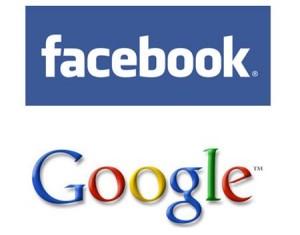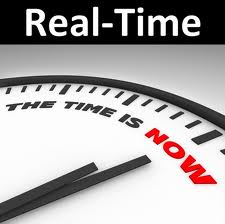[thb_one_third]
This essay has an accompanying presentation that can be viewed in my portfolio.
[/thb_one_third]
Have you ever heard of the Internet described in terms of speed? No, I’m not talking about your bandwidth of uploading and downloading speed, but the term “Fast Web” and “Slow Web.” These are probably foreign to you because the web is simply just the Internet right? Up until recently that was true, but there is a new movement developing called the Slow Web Movement.
The terms slow web and fast web are relatively new concepts to classify two very different approaches to the consumption of information on the World Wide Web. However the terms are actually misnomers because they don’t actually refer to the speed of anything. They instead refer to the user experience of a website or service. User experience (UX) is the way a person feels about using a product, system or service. User experience is subjective in nature, because it is about an individual’s feelings and thoughts about the system. User experience is dynamic, because it changes over time as the circumstances change. The dynamic nature of user experience is the core driver for this new slow web movement.
This paper will draw heavily from the ideas originally written by Jack Chang on his personal blog in June 2012. Chang is a self proclaimed, “writer, designer, and entrepreneur” living in New York who “makes things” on the Internet. Chang’s blog post identifies the core principals or values of the slow web movement; however, he did not explain the significance of the principles’ psychological effects on the user experience. This paper aims to fill that gap by elaborating on the significance of the differences between the fast web and the slow web in terms of user experience.
Chang’s original article is heavily biased in favor of the slow web movement, however the fast web has just as much validity. Each concept is simply suited for a different specific user experience. This paper will seek to present a neutral stance, and to instead highlight the differences and ideal uses for each principal.
To understand why the concept of the slow web developed we must first look at the fast web, this is what you are probably most familiar with, as it is the basis for almost all websites and web services presently available to the general public on the Internet.
 The Fast web is the Facebook and Google of the Internet. It is the aggregation and display of information in a real-time or near real time context. As services like Facebook and Google have developed, we have seen an increase in the quantity and speed of information aggregation, delivery, and consumption.
The Fast web is the Facebook and Google of the Internet. It is the aggregation and display of information in a real-time or near real time context. As services like Facebook and Google have developed, we have seen an increase in the quantity and speed of information aggregation, delivery, and consumption.
Google’s search algorithms are continuously being improved and rewritten to index the entire Internet’s content faster and faster. The way Google originally worked was it essentially indexed copies of the Internet’s content at regular intervals (originally monthly) and then served googlers analyzed content from its indexed copies of the web. This however presented a problem; new information took time to make it into Google’s search indexes. Beginning in 2005 Google began live crawling the web, meaning that instead of waiting for regular intervals, it would use automated code (called bots) to crawl the Internet looking for new content. As soon as content was published and found by a bot, Google would go and index the new content and add it to its massive index to appear in search results. This drastically reduced Google’s indexing time from weeks down to days. Google has since released what it has deemed “live indexing”, where a website’s previous search rankings, would allow live aggregation of content without indexing based on the site’s previous performance in search results. In early 2011 Google began integrating public social media posts and news reports into its search results, allowing near real time search results.
Take this same idea and apply it to Facebook. In its early stages Facebook was a network of pages where friends could go and post on each other’s “walls” and carry on a digital conversation. It was not until 2006 (two years after it’s public debut) that Facebook introduced a “News Feed”, where instead of going between friends pages, you could see an aggregation of conversations. This helped speed up the conversations. This feature was moved into real time with the introduction of the “Activity Stream” in 2011, where a live stream of friend’s actions and conversations would fill your news feed as they happened live. This feature was expanded to allow for inline responses in real time, allowing a digital conversation to flow as smoothly as if you were talking in person, all while staying on the same page. Just as Google made search results reflect the current content of the Internet, Facebook allowed real time conversations.
Both of these examples illustrate the concept of real-time. This is a centerpiece of what is now considered the fast web. Your friend listens to a song, and you find out about it. The smaller the gap between these two, the closer it is to real-time.
 So why is real-time part of the Fast web. Part of it is because real-time is fast. However this isn’t the reason it’s important. There is an intrinsic psychological reason for the move towards real-time information. Real-time information provides us with instant-gratification. When you want to know some random trivia fact for example, searching it on Google provides an almost instant gratification of an answer with little to no work. Before Google, searching and finding an answer to a rather insignificant trivia fact would have taken a lot of work with little payout. Real-time information takes the effort out of finding information. The instant gratification of quickly finding an answer also creates a psychological sense of being informed and connected to the world. You become a member of a community of connected and informed individuals who are always up to speed with whatever is currently happening. This is where we encounter the first principal of the slow web: timely interactions instead of real time interactions.
So why is real-time part of the Fast web. Part of it is because real-time is fast. However this isn’t the reason it’s important. There is an intrinsic psychological reason for the move towards real-time information. Real-time information provides us with instant-gratification. When you want to know some random trivia fact for example, searching it on Google provides an almost instant gratification of an answer with little to no work. Before Google, searching and finding an answer to a rather insignificant trivia fact would have taken a lot of work with little payout. Real-time information takes the effort out of finding information. The instant gratification of quickly finding an answer also creates a psychological sense of being informed and connected to the world. You become a member of a community of connected and informed individuals who are always up to speed with whatever is currently happening. This is where we encounter the first principal of the slow web: timely interactions instead of real time interactions.
Real-time interactions aggregate as they happen. Timely interactions, on the other hand, occur as you need them to happen. Some real-time interactions, like breaking news about an earthquake, can be timely. But not all timely interactions are real-time. I’d argue that most are not. And where the Fast Web is built around real-timedness, the Slow Web is built around timeliness.
The slow web’s use of timeliness has a slightly different psychological background. However, timely information is also used by Google and Facebook in their services. Both Google and Facebook want their real-time interactions to be timely. They accomplish this by essentially weighting certain pieces of real time information based on their relevance to the present query or context. When you Google search a query that is about a current event or a trending news topic, Google now provides you with real-time results that are directly relevant to query in real-time. This could factor in your geographic location or previous queries to more accurately provide relevant information. Timely information is always relevant. However relevant information is not always timely. Let’s take Facebook for example: you can at any point know any of your friend’s birthdays (assuming their privacy settings do not block this information). This is relevant information if you are looking for it, but it is not necessarily timely. However, Facebook notifying you on the day of your friend’s birthday is both relevant and timely. By making real-time or relevant information timely, services can increase the value of that information. However for Facebook and Google this is hit and miss, and there is a steep learning curve. These systems were not designed to always be timely; they were designed to be real-time.
The slow web however is designed and developed to be timely. It uses the psychological effect of timely information to create value, similarly to the way Facebook and Google try to increase the value of their real-time information. The slow web takes advantage of delayed gratification; this is similar to instant gratification, but instead of an instant payoff, the slow web accumulates a few small instant gratifications and delays them into a larger single timely gratification. A fictional example of this would be the distraction of your phone’s notifications buzzing in your pocket when you are not able to check them and respond, say during class. The real-time notification that you can’t respond to creates an anxiety of disconnectedness. What a timely solution would have done is known that you were unavailable and held those notifications until it knew you were available again. Sort of like how a secretary filters a businessperson’s calls and then relays messages when the businessperson is available again.
You may have noted however that this timely solution to a real-time problem required extra information, knowing a person’s schedule. This is an example of how a timely solution would be designed and developed to gather than information, or have a user enter it (or better yet pull from their online calendar) and use it to act as a personal secretary. The slow web is designed and developed for a specific purpose that is intended to be timely. Facebook and Google are real-time aggregators that attempt to sometimes be timely.
Another psychological effect of the slow web is called the caviar complex. This is the idea that instead of having everything, you can have the best of the best. In practice Google and Facebook both try to create this effect, however, again they were not designed for this specific purpose. They were designed to aggregate everything in real-time, and sometimes being timely and relevant. The slow web is always the best of the best. While it is designed to be timely and to delay gratification for a larger payoff, it multiplies this effect by also filtering out extraneous, non-value generating information. Let’s take our original example and extend it to include the caviar complex. While aggregating real-time notifications when you are unavailable, it also goes through and totally deletes unimportant ones, such as spam email, marketing distribution lists and other non-essential, value decreasing distractions. So when you are available you have only the most important and pressing information to process.
Again you may note that, possibly more troubling than the first concern, that this feature is making decisions by itself. This is partially true, but remember again that the slow web was designed and developed for this specific purpose. The slow web focuses on learning what is important to you based on previous interactions and through machine learning. It looks at what notifications you don’t respond to, emails that you delete before opening, and begins to learn patterns that reflect your personal actions. The slow web is personalized to your needs and habits.
An interesting side effect that Chang points out is that real-time information has a converse side effect; it seems random. You cannot truly control real-time information and it still be real-time. By filtering information into timely bursts of highly relevant information, the slow web creates a reliable rhythm. For humans reliable rhythms are at the core of our biological and physiological selves. We are internally regulated by rhythms that moderate our actions and behaviors. The slow web uses this human preference for rhythms to its advantage. Reliable rhythms are the foundation of habitual actions. The slow web effectively creates a new habit of the user relying on the service it provides, creating perpetual value effortlessly.
Let’s revisit Facebook and Google and see how they compare. Google provides value on the basis of convenience. You can at anytime; anywhere you have an Internet connection, find out the answer to almost any question. Facebook allows you to maintain and manage your connection with just about anyone you meet, even just in passing. As long as you become friends on Facebook you can keep up with someone indefinitely with ease even if you never see or speak to them. These services rely of pure aggregation of information. This leads me to the next difference between the fast and slow web.
- Information
- Knowledge
The fast web is about information. The slow web is about knowledge. Information passes through you; knowledge dissolves into you. And timeliness, rhythm, and moderation are all essential for memory and learning. The slow web, by the simple principal of user experience and interaction creates a deeper knowledge and value, as it puts moderated or filtered information into a broader context that is relevant, timely and reliable. All of these pieces create information that is infinitely more valuable than a real-time aggregation of all the world’s information. It’s sort of like having a library of the world’s knowledge with an efficient searching mechanism, rather than a scattering of papers containing the world’s knowledge, to derive value; you have to create order and context. Now you may be thinking that I have begun to favor the slow web, but as I have pointed out throughout, each has it’s own context and use case. Sometimes having filtered information is simply not the end goal. Sometimes having all the information available, unfiltered and unbridled allows you to make conclusions that no algorithm could predict (at least in the foreseeable future). This is important to remember, if this discussion of the slow web and the fast web imparts anything, it is that the goal of a user experience is to successfully accomplish a user’s task at hand.
Now let’s review the slow web, now that we have some context. Timely not real-time. Rhythm not random. Moderation not excess. Knowledge not information. Now you may be asking where are the real examples of this in practice. Unfortunately, there are few to no examples of the slow web in public practice, this is due primarily to the nature of the concept itself. We simply haven’t developed the techniques needed to facilitate this kind of information processing. The fundamental principals of the slow web rely on technology such as machine learning, evolutionary algorithms and artificial intelligence. These branches of computer science simply have not become economically viable solutions at a cost people are willing to pay for real world implementations. As progress is made in these fields, the cost of these technologies will continue to decrease. Until then however, we can take these principals of interaction and begin to think about how we can use their principal concepts and psychological effects to develop better user experiences.
In conclusion I would like to reprint an excerpt from the original text that inspired this essay, “The Slow Web: A Manifesto,” an open source document that hopes to shape the future of the slow web movement:
“The web moves at an incredible pace, and increasingly services are being demanded live. With a live web, users have come to expect real-time (or close to) feedback. Indeed, by the virtue of being consumer to web services, one finds oneself inundated by notifications and feedback from said services.
Welcome to the fast web. Your attention is required now. Here, and there, and everywhere.
The slow web is hence simply this: it is not the fast web.
It is our belief that the Slow Web movement, like the Slow Food movement, is a truly progressive way forward. We wish to provide good examples of Slow Web applications, and attempt to draft guidelines for what qualifies as a Slow Web application. We also wish to explore further the psychology and reasons for a Slow Web.
Ultimately, the philosophy behind the Slow Web movement (as it currently stands) is that users should have a life. This is antithetical to the fast web’s main drivers – the idea of instant gratification i.e. “I want feedback, I want it now”. While there are most certainly merits to a real-time web, it is the philosophy of the Slow Web movement that users should not be slaves to it.
Habits form by virtue of feedback loops. Upon forming habits that hooks one to an intravenous drip of constant feedback from the internet, one would eventually be incapacitated by the sheer amount of information flowing through. As such we feel that the fast web is creating unhealthy feedback loops which will lower one’s efficiency and productivity in the long run.
We believe that one should be doing what one does best at doing, instead of being drip-fed a constant stream of information and being pressured to respond instantly. There are many clever people out there, trying to solve this problem. How often has one hear the phrase “email is broken”? Companies like Undrip are putting their best minds to work, trying to solve the information overflow problem.
It is our belief that engineering new solutions to a fundamental problem like this is akin to merely treating the symptoms and not the illness. We believe that a truly progressive way forwards is the Slow Web”.
Bibliography
Burkett, Christopher C. “A Principle Demonstrated Through History: Lincoln’s Gettysburg Address.” On Principle (2009): 2-5. Print.
Chewxy. “THE SLOW WEB: A MANIFESTO.” The Slow Web Movement: A Truly Progressive Way Forwards. N.p., Oct. 2012. Web. Dec. 2012.
Cheng, Jack. “The Slow Web.” Jack Cheng’s Personal Blog. N.p., June 2012. Web. Dec. 2012.
Mckay, Kate. “Good Things Come to Those Who Wait: The Power and Pleasure of Delayed Gratification.” The Art of Manliness. N.p., Mar. 2011. Web. 06 Dec. 2012.
Psychology of Web Design. N.p.: Smashing Magazine, n.d. Smashing Magazine Ebook Series. Smashing Magazine. Web.
Wallace, Patricia M. The Psychology of the Internet. Cambridge, UK: Cambridge UP, 1999. Print.
Weinschenk, Susan. 100 Things Every Designer Needs to Know about People. Berkeley, CA: New Riders, 2011. Print.




